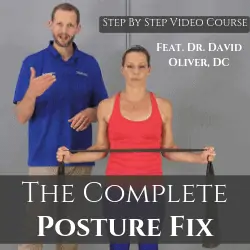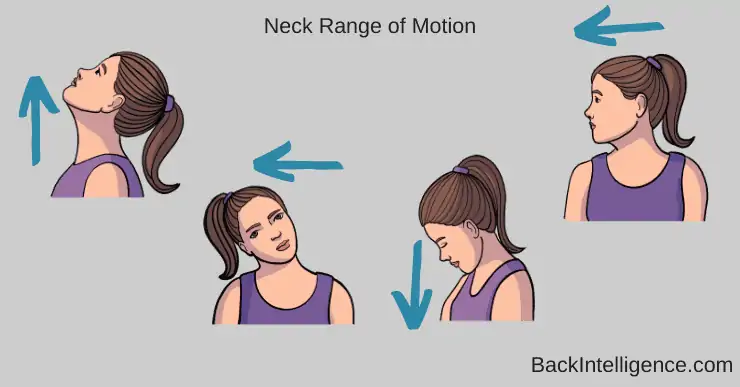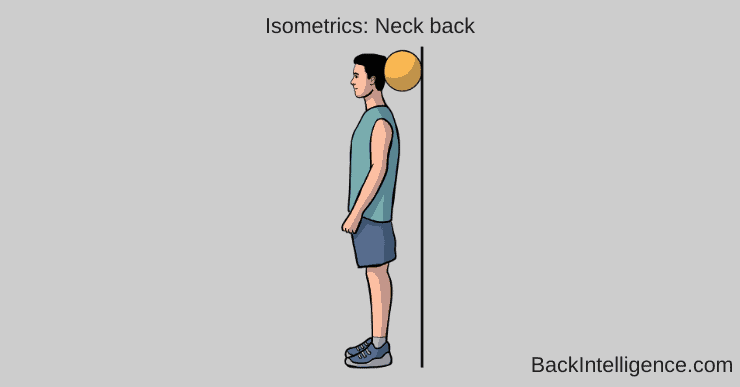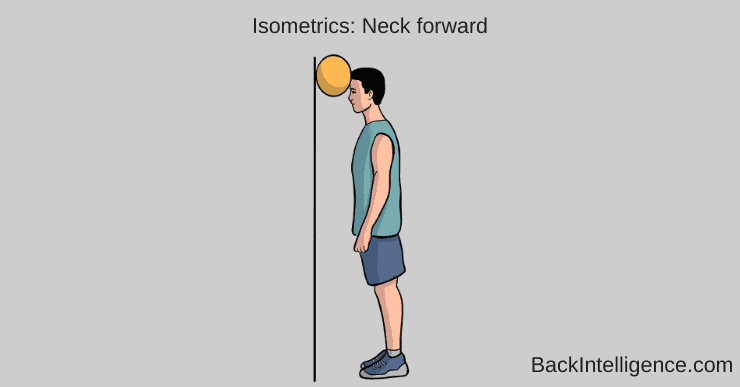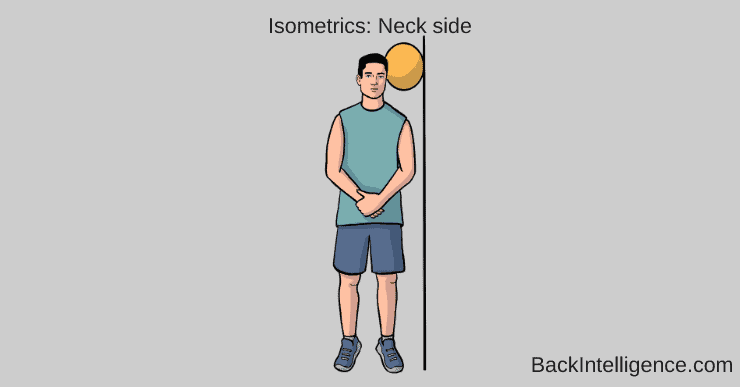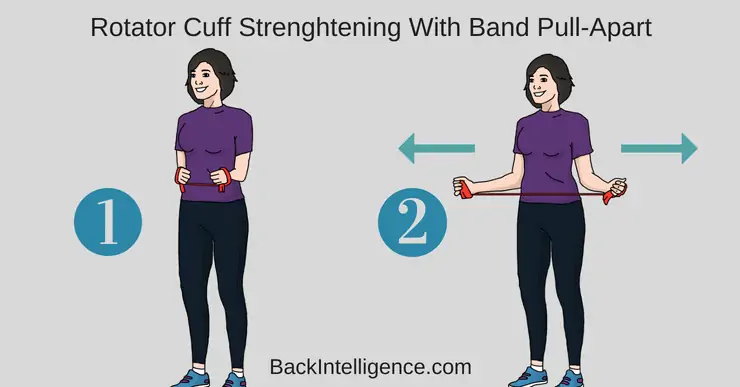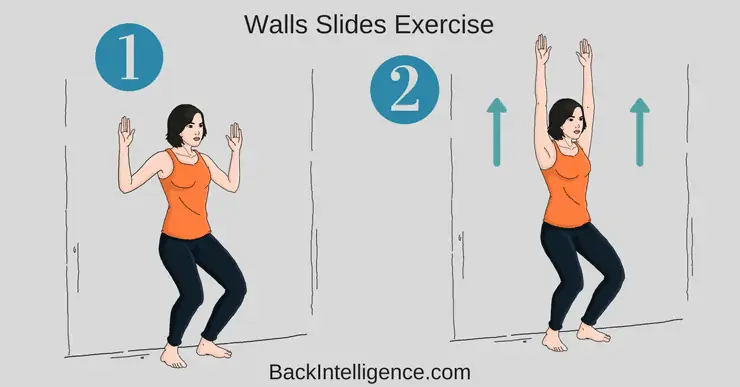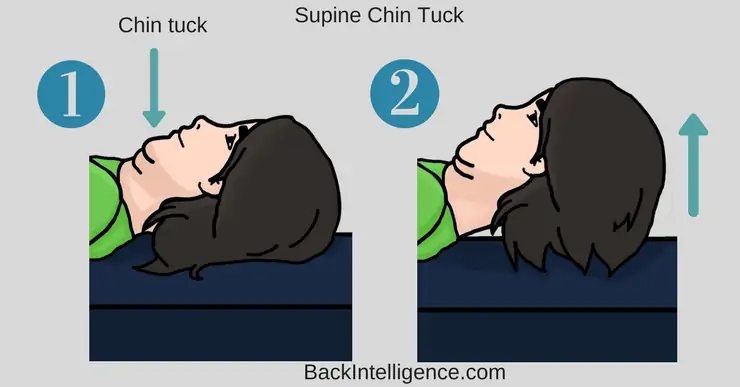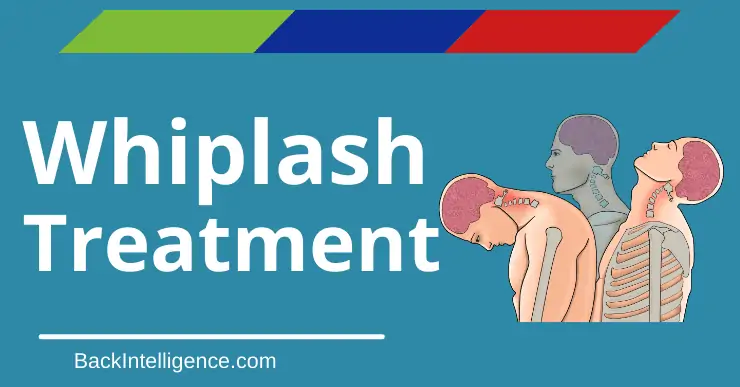
Whiplash is an injury that affects the soft tissues such as skin, muscles, ligaments, etc as well as the bones in your neck.[1][2][5]
It is a fast acceleration-deceleration injury (Usually from car accidents), meaning your head moves quickly backwards then forwards and causes neck pain and disability.[1][2][4][5]
There are 5 grades of whiplash ranging from 0 meaning no physical signs (no pain) to 5 meaning there is a fracture or dislocation.[2][4][5][6] The group of symptoms are altogether referred to as Whiplash-associated disorder (WAD).[5]
What does whiplash feel like?
A whiplash injury may cause pain or stiffness, but is not often felt until hours after the event takes place or the next day. The level of pain, stiffness and other symptoms depends on the grade of whiplash you have. If you have higher grades like III or IV you may notice neurological symptoms like altered reflexes.
This article will focus on grades I and II because those respond well to conservative treatments.
Symptoms of Whiplash
- Neck pain[4][6]
- Stiffness[4]
- Reduced range of motion[4]
- Headaches[6]
- Dizziness[6]
- Numbness or Weakness in the arms[6]
- Numbness of head or face[6]
- Tinnitus, or ringing in the ears[6]
- Memory/concentration problems[6]
- Sleep problems[6]
Main Causes of Whiplash
How to treat whiplash and how long it takes to recover?
Many patients recover in a few months after their injury without treatment,[4] but 40-60% of patients develop chronic symptoms and still report pain after 1 year. [3][5][6][7] Whiplash grade I typically has neck pain/tenderness or stiffness, but no loss of motion will typically recover within 6 months of injury.[4]
Should I Wear A Neck Brace? (Soft Collar)
Most people feel comforted by the idea of neck support such as a soft collar after a neck injury, but evidence shows that soft collars/braces can be less effective than learning how to stabilize your neck using your muscles with exercises and physical therapy.[3] Therefore, Neck braces aren’t usually recommended.
The Complete Posture Fix (With Dr. Oliver)
Fix your Rounded shoulders & Fwd Head posture, get out of pain and increase your mobility.
Learn More
Exercises for Whiplash
Acting as usual can be good for recovery in minor cases of whiplash because it will encourage you to use your muscles and move your neck to help the natural recovery process. In cases with higher pain levels, it is important to complete exercises to help decrease the pain.[5]
Physical Therapy has been shown to reduce the period of disability where patients may be unable to work.[2] Physical therapy exercises can also help reduce pain.[4]
Begin treatment right away. The longer you wait between the time of injury and beginning exercises/stretches, the more likely you are to have chronic symptoms.[3] Acute care exercises may temporarily increase pain, but are better for pain reduction in the long term.[5]
#1: Active Range of Motion
Begin range of motion exercises directly after acute injury to help decrease pain levels and improve function. Moving as much as you can tolerate is important because it won’t cause damage to your neck if you have whiplash grade I or II and it will aid in recovery. Fear of movement due to pain during acute phase of injury can cause delayed recovery.
Some Tips:
- Sit upright in a chair
- Slowly move your head to look up at the ceiling as far is as comfortable.
- Move your head down to look at your toes as if you were trying to touch your chin to your chest.
- Bring your head to neutral, and now rotate the head to look left & right
- Do these up to a tolerable range and never push into pain.
- Repeat 10x
#2: Neck Stabilization exercises (Can reduce pain in the short term)
Cervical isometrics
A) For Extension:
- Stand with your back to the wall and place the ball between your head and the wall.
- Gently press your head backwards into the ball using 10-20% of your maximum effort.
- Hold for 5-10 seconds
- Repeat 10x
B) For Flexion:
- Stand facing the wall and place the ball between your head and the wall.
- Gently press your head forwards into the ball using 10-20% of your maximum effort.
- Hold for 5-10 seconds.
- Repeat 10x
C) For Side bending:
- Stand next to the wall facing sideways.
- Place the ball between the wall and the side of your head.
- Gently try to bend your head sideways into the ball using 10-20% of your maximum effort.
- Hold 5-10 seconds.
- Repeat 10x
#3: Bilateral External Rotation
- Stand up straight. Bring your arms up to 90 degrees with your elbow by your sides and palms facing upwards.
- Slowly bring your hands away from each other while keeping your shoulders back.
- Focus on squeezing your shoulder blades back and down
- Complete 2 x 10 reps
#4: Wall Angels
This exercise strengthens the low trapezius muscles and serratus anterior as well as opens up the shoulders and chest.
- Stand with your back to the wall and try to keep your upper back and buttocks in contact with the wall and walk your feet out about 12 inches from the wall.
- Draw-in your belly toward the wall, as to avoid an excessive arch in the low back.
- Bend your elbows to 90 degrees so that your hands are pointing up, and try to press your forearms against the wall (this may be an uncomfortable position when you first start performing this exercise)
- Slowly slide your arms up the wall and then back down the wall.
- Begin with 1 set of 10 repetitions and work your way up to 3 sets of 10 repetitions.
#5: Supine Chin Tucks
- While lying on your back, perform a chin tuck.
- From this tucked position slowly lift your head up off the bed/floor (whatever surface you are on) only about 3-4 inches.
- Hold this position for 5 seconds, then return to the starting position.
- Begin with 10 repetitions and gradually increase to 20-30x.
- Remember to keep breathing while doing this movement.
Watch The Video:
Learn More
Related:
Dowager’s Hump Exercises – AKA Hyperkyphosis
Cervical Facet Joint Pain – Treatment & Exercises
Stiff Neck Remedies You Can Do At Home (7 Ways)
Is it bad to crack your own back or neck?
How To Do Chin Tucks Exercise Correctly (Video)
Sources:
[1] Wiangkham T, Duda J, Haque S, et al. The effectiveness of conservative management for acute whiplash associated disorder (WAD) II: a systematic review and meta-analysis of randomised controlled trials. PLoS One. 2015;10(7): e0133415. doi: 10.1371/journal.pone.0133415
[2] Dehner C, Elbel M, Strobel P, et al. Grade II whiplash injuries to the neck: what is the benefit for patients treated by different physical therapy modalities? Patient Saf Surg. 2009; 3:2. doi: 10.1186/1754-9493-3-2
[3] Teasell RW, McClure JA, Walton D, et al. A research synthesis of therapeutic interventions for whiplash-associated disorder (WAD): part 2-interventions for acute WAD. Pain Res Manag. 2010; 15 (5): 295-304. doi: 10.1155/2010/640164
Doctor of Physical Therapy and currently works full time as a pediatric physical therapist. Rachel has worked in Sports, Inpatient Rehab and Outpatient Ortho settings under the guidance of incredible mentors focusing on low back pain. Rachel believes in holistic and patient centered care and enjoys developing their course of treatment.
